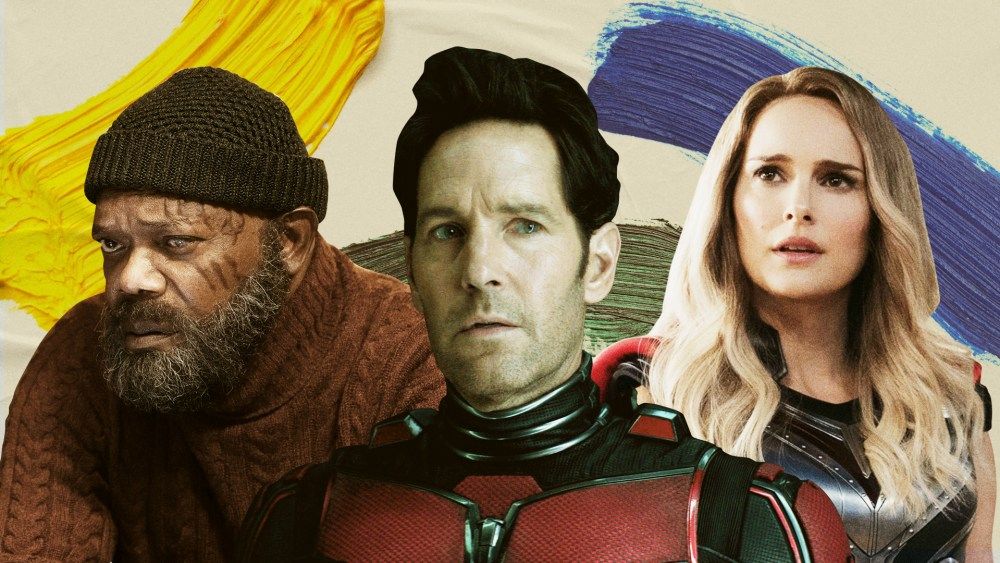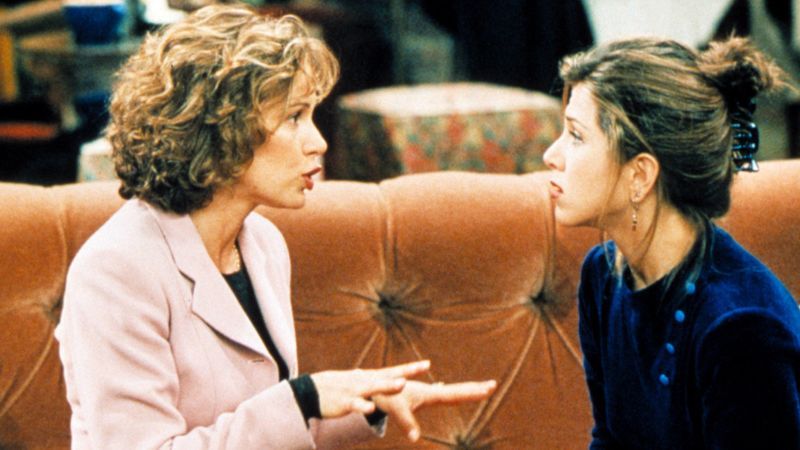Marvel's 'Secret Invasion' Is a Symptom of Larger Problems
SPOILER ALERT: This story discusses plot developments in the finale of Marvel Studios’ “Secret Invasion,” currently streaming on Disney+, but maybe that doesn’t really matter to you — and maybe that’s OK.
In 2007, at my very first San Diego Comic-Con, I witnessed the entertainment industry change in a matter of minutes, when Jon Favreau debuted the first footage of Robert Downey Jr. in “Iron Man.”
At the time, Marvel Studios was an independent company banking its entire future on a third-tier character played by an untested star, an effort that many in the industry and the fan community alike regarded with deep skepticism (if not outright derision). The film had just finished shooting, so the footage only had one real VFX shot of Iron Man suit flying alongside jet fighters; the rest of the preview relied on Downey’s charms and in-camera footage of him as Tony Stark in the giant Iron Man suit Stark constructs at the beginning of the movie.
It blew the roof off of Hall H. The footage was delightful and scrappy and inventive, a welcome antidote to the bloated trajectory of superhero movies that decade, like the overstuffed bombast of Sony’s “Spider-Man 3,” which had debuted two months earlier, or 20th Century Fox’s buffoonish “X-Men: The Last Stand” from the previous summer. It felt like the kind of cultural shift that can happen when audiences en masse seize on something that feels thrillingly new. The next year, “Iron Man” was a runaway sensation, grossing $585.8 million worldwide; by 2012, “The Avengers” had grossed $1.5 billion, and Marvel’s shoot-the-moon gambit to create an interconnected cinematic universe wound up dominating the industry for the rest of the decade.
I kept thinking about that moment in Hall H 16 years ago while attending this year’s San Diego Comic-Con. Marvel Studios, like virtually the rest of Hollywood, was a no-show due to the SAG-AFTRA strike, and yet that July 21 weekend the culture was unmistakably going through a similar, and perhaps equally monumental, realignment, as audiences were clamoring in record numbers for Greta Gerwig’s unabashedly feminist comedy “Barbie” and Christopher Nolan’s three-hour biopic “Oppenheimer.”
That same week, Marvel was wrapping up the 44th — 44th! — title in the Marvel Cinematic Universe, the torpid Disney+ conspiracy drama “Secret Invasion.” Despite initially solid reviews and an outrageously talented cast — including Samuel L. Jackson, Emilia Clarke, Olivia Colman, Don Cheadle, Ben Mendelsohn and Kingsley Ben-Adir — “Secret Invasion” wound up being an all-too fitting example of the slipshod listlessness that has pervaded Marvel’s storytelling of late, and all but dethroned Marvel as the unquestioned apex of the industry.
Over the course of the series, we learn that Cheadle’s James “Rhodey” Rhodes has really been a shapeshifting Skrull named Raava, though the character didn’t really need to have a name, since the show evinced no interest in Raava — including what it felt like to be a female Skrull impersonating a male human — beyond her function in the story. More egregiously, the series’ director, Ali Selim, told Variety’s Angelique Jackson that Raava has been impersonating Rhodey since events of 2016’s “Captain America: Civil War.” Not only does that strain narrative credulity to its breaking point, it undermines the emotional climax of “Avengers: Endgame,” when Rhodey sat with his best friend Tony Stark (Robert Downey Jr.) as he died. If that moment can get retconned, why bother investing in anything happening in the Marvel Cinematic Universe?
And then there’s Clarke’s character, G’iah, the Skrull daughter of Mendelsohn’s Talos from 2019’s “Captain Marvel.” Deep breath, everyone: In the finale, G’iah impersonates Nick Fury (Jackson) to deliver the DNA of all of the Avengers collected after the Battle for Earth in “Endgame” to the villain, Gravik (Ben-Adir), who uses it to infuse himself with all of their powers, but he also infuses G’iah with those powers, at which point they fight by transforming different parts of their bodies into different random Avengers, until G’iah wins by blowing a giant hole in Gravik’s chest. This fight unfolds with all the personality of a Noovie featurette, amid an abandoned Russian nuclear power plant best described as “anonymously grey,” using two characters we barely know or care about to deliver a glop of undifferentiated fan service that doesn’t make any sense: Look, they’re using the Abomination’s arm and a Frost Beast’s ice blade and Ghost’s teleportation powers, all characters who were not at the Battle for Earth! What fun we’re having!
The last we see of G’iah — who has, just to underline this point, suddenly become the most powerful person in the entire Marvel Cinematic Universe — she’s agreed to work for Colman’s MI6 operative Sonya Falsworth. Because why not?
Gareth Gatrell / Courtesy of Marvel Studios
All of this show’s issues are mere symptoms of a much larger problem for Marvel: The very things that allowed the studio to soar in the 2010s have become an oppressive burden in the 2020s. First, there’s the Marvel Cinematic Universe itself: “Secret Invasion” wanted to be a tightly wound conspiracy thriller that built off the events of “Captain Marvel” to dissect how Nick Fury had become so formidable. Instead, it was weighed down by the events of “Endgame,” and an apparent need to cram as many superhero references as possible into the finale. Similarly, whereas the first two “Ant-Man” movies were relatively self-contained capers, “Ant-Man and the Wasp: Quantumania” was encumbered with officially launching Jonathan Majors’ Kang as the Biggest Bad of the Multiverse Saga. The film ended with Scott Lang (Paul Rudd) wondering if anything that happened in the movie mattered at all.
Did “Black Panther: Wakanda Forever” really need to keep cutting away from the heartbreaking central conflict to scenes with Julia Louis-Dreyfus’ Valentina Allege de Fontaine from “The Falcon and the Winter Soldier”? Did “Ms. Marvel” really need to abandon its story about the generational trauma of the India-Pakistan partition to incorporate the Department of Damage Control from “Spider-Man: Homecoming”? Did Thor (Chris Hemsworth) really need to spend the first act of “Thor: Love and Thunder” traipsing around with the Guardians of the Galaxy instead of focusing on the emotional devastation of Jane Foster’s (Natalie Portman) cancer?
No, they did not.
But even if all of these projects had excised the unnecessary vestiges of Marvel Cinematic Universe, they still would still be hobbled by the Marvel method. Filmmakers often describe Marvel’s approach as “highly collaborative”; when I interviewed “Love and Thunder” director Taika Waititi last year for Variety’s cover story on Portman, he said that Marvel’s films “change all the way through post-production.” What that means in real terms is that Marvel’s layer of creative executives, led by Feige, will rip up scripts and storylines throughout the creative process if they believe they aren’t working to their satisfaction — no matter how far along that project is, nor how disruptive the changes will be to the finished film or series.
This approach, which isn’t wholly unique to Marvel, allowed the studio to remain nimble in the 2010s, leaning into ideas and creative directions that were working rather than be tied down by a rigid grand design. But it also meant that Marvel movies felt largely homogenous in approach and style, and most filmmakers struggled to establish their own voice inside it. As Marvel aggressively expanded in the 2020s to fill the Disney+ pipeline, the seams began to show — and then rip apart. Visual effects work suffered, and visual effects artists were not quiet about it. Final episodes of TV shows and the final acts of movies often felt rushed and sloppy.
To be clear, audiences haven’t cooled entirely on superheroes. Marvel’s “Guardians of the Galaxy: Vol. 3” and Sony’s “Spider-Man: Across the Spider-Verse” are major hits because they focused on the emotional arcs of their characters rather than servicing a wider cinematic universe — and crucially, each film looks and feels unlike any other movies in the marketplace right now. There’s a reason that “Guardians” filmmaker James Gunn, who is now co-chief of DC Studios, has proclaimed that DC’s movies will have settled, finished screenplays before anything goes into production.
But neither of these films became a “Barbenheimer”-style event in the way that Marvel films routinely did in the 2010s. Audience taste just may be veering away from superhero fare. Marvel still has plenty of projects in its pipeline — I’m personally thrilled for Season 2 of “Loki,” my favorite of Marvel’s Disney+ shows to date. But it’s telling that since Feige laid out the future of the Marvel Cinematic Universe at the 2022 San Diego Comic-Con, Marvel and Disney have pushed several major titles further down the slate, including “Avengers: The Kang Dynasty” from May 2025 to May 2026, and “Avengers: Secret Wars” from Nov. 2025 to May 2027. (Majors’ upcoming trial on domestic violence charges could also affect the trajectory of the franchise, and especially what happens with Kang.)
Disney CEO Bob Iger even admitted in June that Marvel’s exponentially increased output for Disney+ “diluted focus and attention” for the studio, strongly suggesting that Marvel will be dialing back its output closer to pre-streaming levels. Feige will no doubt be back in Hall H again. But this time, he, too, may need to channel the power of all the Avengers to save the Marvel Cinematic Universe.
Source: Variety


